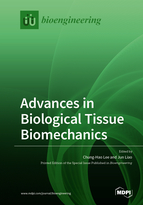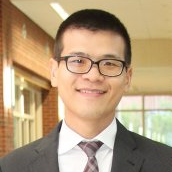Advances in Biological Tissue Biomechanics
A special issue of Bioengineering (ISSN 2306-5354).
Deadline for manuscript submissions: closed (30 April 2019) | Viewed by 87933
Special Issue Editors
Interests: cardiovascular heart valve biomechanics; multi-scale modeling; biomaterials design
Special Issues, Collections and Topics in MDPI journals
Interests: tissue biomechanics; tissue regeneration
Special Issues, Collections and Topics in MDPI journals
Special Issue Information
Dear Colleagues,
Advanced experimental and computational biomechanics have become essential components for a better understanding of the physiological and pathological conditions of biological tissues in the human body. Recent advances in medical imaging modalities, image segmentation, tissue characterization experiments, and predictive computer simulations have made major contributions to transforming current therapeutic paradigms towards the facilitations of patient-specific diagnostics and individualized surgery planning.
This Special Issue on “Advances in Biological Tissue Biomechanics”, therefore, will focus on original research papers and comprehensive reviews, dealing with cutting-edge experimental and computational methodologies for multiscale biomechanical investigations of biological tissues in the human body system. Topics of interest for this Special Issue include, but are not limited to, the following:
- Advanced experimental techniques for characterizing biological tissue mechanics
- Novel microstructure-based constitutive model for biological tissues
- Growth, remodeling and repair in biological tissues
- Quantification of in vivo functional biomechanical properties of biological tissues
- Investigations of interrelationship of tissue’s biomechanical behavior to its underlying microstructure
- Verification, validation and uncertainty quantification in image-based patient-specific simulations
- Advanced computational biomechanics, such as reduced-order modeling, for fast personalized surgery simulations and pre-operative treatment planning
- Molecular and cellular biomechanics informed tissue biomechanics
All research areas considered relevant as long as experimentations and/or predictive simulations are the main study drivers.
Dr. Chung-Hao Lee
Dr. Jun Liao
Guest Editors
Manuscript Submission Information
Manuscripts should be submitted online at www.mdpi.com by registering and logging in to this website. Once you are registered, click here to go to the submission form. Manuscripts can be submitted until the deadline. All submissions that pass pre-check are peer-reviewed. Accepted papers will be published continuously in the journal (as soon as accepted) and will be listed together on the special issue website. Research articles, review articles as well as short communications are invited. For planned papers, a title and short abstract (about 100 words) can be sent to the Editorial Office for announcement on this website.
Submitted manuscripts should not have been published previously, nor be under consideration for publication elsewhere (except conference proceedings papers). All manuscripts are thoroughly refereed through a single-blind peer-review process. A guide for authors and other relevant information for submission of manuscripts is available on the Instructions for Authors page. Bioengineering is an international peer-reviewed open access monthly journal published by MDPI.
Please visit the Instructions for Authors page before submitting a manuscript. The Article Processing Charge (APC) for publication in this open access journal is 2700 CHF (Swiss Francs). Submitted papers should be well formatted and use good English. Authors may use MDPI's English editing service prior to publication or during author revisions.
Keywords
- in vivo stresses/strains
- constitutive models
- growth and remodeling (G&R)
- multiscale biomechanics
- patient-specific modeling








